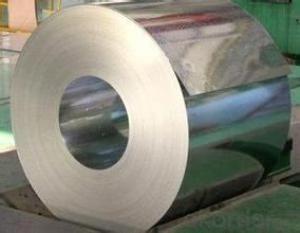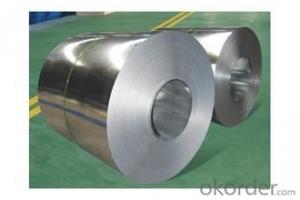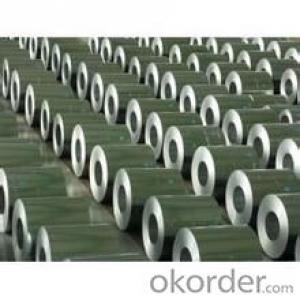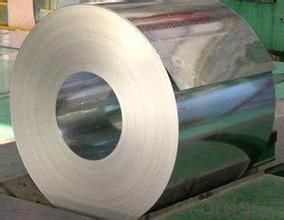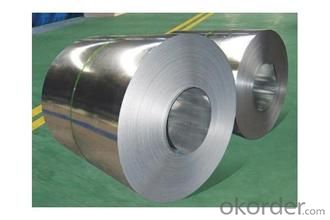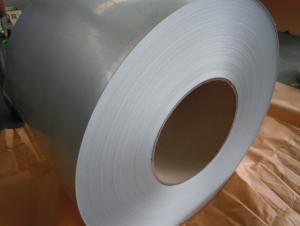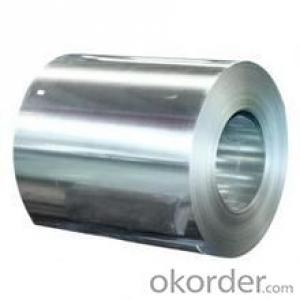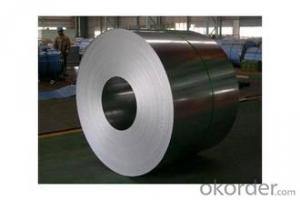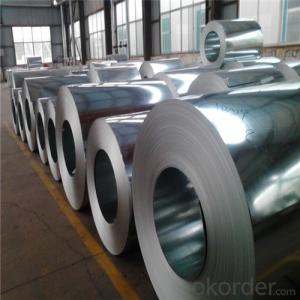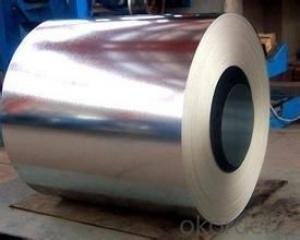Hot-Dip Galvanized/ Aluzinc Steel in Good Quality
- Loading Port:
- Tianjin
- Payment Terms:
- TT OR LC
- Min Order Qty:
- 20 m.t.
- Supply Capability:
- 5000000 m.t./month
OKorder Service Pledge
OKorder Financial Service
You Might Also Like
Hot-dip galvanized steel coils are available with a pure zinc coating through the hot-dip galvanizing process. It offers the economy, strength and formability of steel combined with the corrosion resistance of zinc. The hot-dip process is the process by which steel gets coated in layers of zinc to protect against rust. It is especially useful for countless outdoor and industrial applications.
Description:
1.Mateials:SGCC,DX51D / DX52D /S250,280GD
2.Size:width:600-1250mm(900mm,1215mm,1250mm,1000mm the most common)
thickness:0.15-2.0mm
length:1000-6000mm,as your require
3.Zinc coating :60-180g( as required)
4.Coil id:508mm
5.Coil weight: 3-5MT(as required)
6. Surface:regular/mini/zero spangle, chromated, skin pass, dry etc.
Service:
1,on time delivery
2,high quality with competitive price
3,good service
4,long-term cooperation
5, rely on honors
Applications of our Galvalume Coil:
Galvalume Coil widely used for roofing products, It is also the ideal base material for Prepainted Steel Coil.
1. roofing
2. gutters
3. unexposed automotive parts
4. appliances
5. furniture
6. outdoor cabinetry
- Q: What are the different types of steel coil packaging machines?
- There are several different types of steel coil packaging machines available in the market. These machines are designed to efficiently and effectively package steel coils for storage, transportation, or distribution. Some of the different types of steel coil packaging machines include: 1. Automatic steel coil packaging machine: This type of machine is fully automated and can handle high-volume packaging requirements. It uses advanced technology to wrap the steel coils with a protective layer of film or paper. The machine can also apply strapping or stretch film to secure the coils during transportation. 2. Semi-automatic steel coil packaging machine: This machine requires some manual intervention to load and unload the steel coils. It is suitable for medium to high-volume packaging needs and offers a good balance between automation and cost-effectiveness. The machine typically uses a combination of wrapping, strapping, and shrinking techniques to package the coils. 3. Vertical steel coil packaging machine: This type of machine is designed specifically for packaging vertical steel coils. It can wrap the coils with a layer of film or paper, and then apply strapping or stretch film to secure them. The vertical design allows for easy loading and unloading of the coils. 4. Horizontal steel coil packaging machine: This machine is ideal for packaging horizontal steel coils. It can wrap the coils with a protective layer of film or paper, and then apply strapping or stretch film to secure them. The horizontal design ensures easy loading and unloading of the coils. 5. Customized steel coil packaging machine: Some manufacturers offer customized packaging solutions based on specific requirements. These machines can be tailored to accommodate different coil sizes, shapes, and packaging materials. They are designed to provide maximum flexibility and efficiency in the packaging process. In summary, the different types of steel coil packaging machines include automatic, semi-automatic, vertical, horizontal, and customized machines. The choice of machine depends on factors such as packaging volume, coil orientation, and specific requirements of the steel coils being packaged.
- Q: What are the different methods of annealing steel coils?
- There are several different methods of annealing steel coils, each with its own advantages and applications. The main methods include full annealing, process annealing, and spheroidize annealing. Full annealing is the most common method and involves heating the steel coils to a temperature above its critical point, typically between 800 and 900 degrees Celsius (1472 and 1652 degrees Fahrenheit), and then slowly cooling it down in a controlled manner. This process helps to refine the grain structure of the steel, making it softer and more ductile. Full annealing is often used to relieve internal stresses, improve machinability, and enhance the overall mechanical properties of the steel. Process annealing, also known as subcritical annealing or stress relief annealing, is a method used to reduce the hardness and brittleness of steel coils. It involves heating the coils to a temperature below its critical point, typically between 550 and 650 degrees Celsius (1022 and 1202 degrees Fahrenheit), and then slowly cooling them down. This process helps to relieve internal stresses that may have developed during previous manufacturing processes, such as cold working or welding. Process annealing is commonly used to improve the formability and toughness of steel coils. Spheroidize annealing is a specific type of annealing that is used to soften high carbon and alloy steels. It involves heating the steel coils to a temperature slightly below its critical point, typically between 650 and 700 degrees Celsius (1202 and 1292 degrees Fahrenheit), and then holding it at that temperature for a prolonged period of time. This allows the carbides within the steel to transform into rounded or spheroidal shapes, which increases the steel's machinability and ductility. Spheroidize annealing is often employed in the production of cutting tools, bearings, and other applications where improved machinability is desired. In addition to these main methods, there are also variations and specialized techniques that can be used for specific purposes, such as recrystallization annealing, intercritical annealing, and solution annealing. Each method has its own set of parameters and temperature ranges, and the choice of annealing method depends on factors such as the type of steel, desired mechanical properties, and the intended application of the steel coils.
- Q: How do steel coils perform in extreme weather conditions?
- Steel coils are highly durable and resistant to extreme weather conditions. They can withstand intense heat, freezing temperatures, heavy rain, and strong winds without losing their structural integrity or performance.
- Q: Explain how you could make plastic sink and steel float?
- plastic can be denser than water. Make it a brick and it sinks. Ships float because they are mostly air - surrounded by steel.
- Q: What are the factors influencing the price of steel coils?
- The price of steel coils can be influenced by a variety of factors. These factors include: 1. Raw material costs: The cost of raw materials, such as iron ore and coal, directly affects the price of steel coils. Fluctuations in commodity prices can have a significant impact on the overall price. 2. Supply and demand: The balance between supply and demand in the steel industry plays a crucial role in determining the price of steel coils. If there is high demand, prices are likely to increase. Conversely, if there is an oversupply, prices may decrease. 3. Production and manufacturing costs: The cost of producing and manufacturing steel coils, including labor, energy, and transportation costs, can also impact the final price. Any changes in these costs can influence the overall price. 4. Currency exchange rates: The price of steel coils can be affected by fluctuations in currency exchange rates. If the currency in which steel is traded weakens against other currencies, it can result in higher prices. 5. Government regulations and policies: Government regulations, such as import tariffs, export restrictions, and environmental regulations, can impact the price of steel coils. These regulations can affect the cost of production and trade, ultimately influencing the price. 6. Market competition: The level of competition among steel manufacturers and suppliers can also impact the price of steel coils. If there are many suppliers and manufacturers, it can lead to competitive pricing and potentially lower prices. Conversely, if there are few suppliers dominating the market, prices may be higher. It is important to consider that these factors can vary over time and in different regions, which ultimately affects the pricing of steel coils in the market.
- Q: What are the common coil handling equipment used in the industry?
- Some common coil handling equipment used in the industry are coil cradles, coil reels, coil straighteners, coil feeders, and coil transfer cars. These tools are essential for safe and efficient handling of coiled materials during various manufacturing processes.
- Q: Can steel coils be stored outdoors?
- Yes, steel coils can be stored outdoors, but it is not recommended for long-term storage. Outdoor storage exposes the coils to the elements, which can lead to corrosion and other forms of damage. It is preferable to store steel coils indoors or in covered areas to ensure their longevity and protect them from environmental factors.
- Q: What are the common methods of inspecting steel coils for defects?
- Inspecting steel coils for defects involves several commonly used methods. These methods encompass visual inspection, ultrasonic testing, magnetic particle inspection, and eddy current testing. Visual inspection, the most basic method, entails physically examining the steel coil's surface for noticeable defects like cracks, dents, or irregularities. Typically, this initial step in the inspection process promptly identifies any obvious defects. Ultrasonic testing, a more advanced method, employs high-frequency sound waves to detect defects within the steel coil. Ultrasonic waves are transmitted into the coil via a probe, and any internal flaws or defects reflect the waves back to the probe. This method effectively identifies defects such as voids, cracks, or inclusions. Magnetic particle inspection is another commonly utilized method. It involves magnetizing the coil and applying iron particles to the surface. Defects or cracks disrupt the magnetic field, attracting the iron particles and making them visible. This method is particularly effective for surface cracks or defects. Eddy current testing is a non-destructive method utilizing electromagnetic induction to detect defects in the steel coil. By generating an alternating magnetic field using a probe, any changes in the material's electrical conductivity or magnetic permeability due to defects generate eddy currents. These eddy currents can be measured and analyzed to identify defects like cracks, voids, or changes in material properties. In summary, these common methods offer varying levels of accuracy and sensitivity in inspecting steel coils for defects, ensuring their quality and integrity. The choice of method depends on factors such as the type and size of defects to be detected, the required level of inspection accuracy, and the time and cost limitations of the inspection process.
- Q: How are steel coils priced?
- Steel coils are priced based on various factors such as the current market demand and supply, raw material costs, production and operational expenses, transportation costs, and other market dynamics. Additionally, factors like quality, specifications, and any additional processing or customization required can also influence the pricing of steel coils.
- Q: What are the common surface finishes available for steel coils?
- Steel coils offer various surface finishes to meet specific application and aesthetic needs. One commonly used finish is hot-dip galvanized, which involves zinc coating the coil for excellent corrosion resistance in outdoor settings exposed to moisture and harsh weather. Another popular option is electro-galvanized, achieved by electroplating a thin zinc layer onto the coil. While it provides good corrosion resistance, it is not as durable as hot-dip galvanized. In addition, steel coils can be coated with paint or polymer to enhance appearance and provide extra corrosion protection. The coatings are available in different colors and finishes, such as matte or glossy, catering to specific aesthetic requirements. Furthermore, steel coils can undergo a mill finish, leaving them raw and untreated for future processing or coating. Other surface finishes include stainless steel, achieved through passivation to enhance corrosion resistance, and brushed or polished finishes for decorative purposes. Ultimately, the choice of surface finish depends on factors like intended use, environmental conditions, and desired appearance. Each finish offers unique advantages and characteristics.
Send your message to us
Hot-Dip Galvanized/ Aluzinc Steel in Good Quality
- Loading Port:
- Tianjin
- Payment Terms:
- TT OR LC
- Min Order Qty:
- 20 m.t.
- Supply Capability:
- 5000000 m.t./month
OKorder Service Pledge
OKorder Financial Service
Similar products
Hot products
Hot Searches
Related keywords
